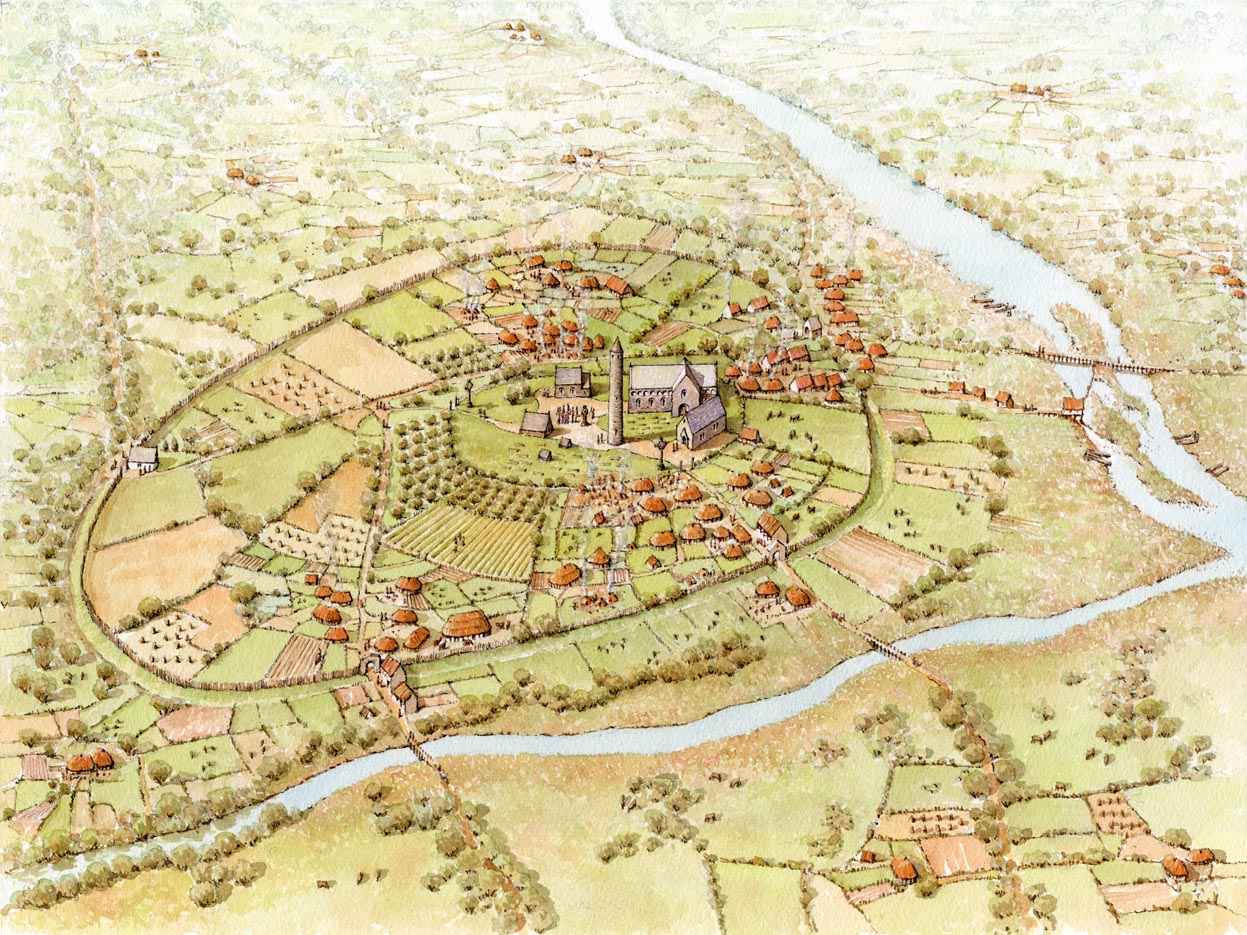 |
The Early Monastery, Kilkenny, Co Kilkenny
For more information visit http://www.stcanicescathedral.ie/
Image ©Cathedral Church of St Canice - Paint the Past
|
On the way to church on Sunday, my daughter Emma read me an article on agrihoods, an up and coming "thing" where houses are built around a working farm rather than say, a golf course. The prices quoted in the article for this one in California made me laugh. I think the median home price was $500,000.
Of course Catholics solved this food/community problem ages ago by building houses around a monastery or cathedral. This make a whole lot more sense, as you have a Catholic community, real food, and ready access to the sacraments, not to mention the grounding effect of having Christ in the tabernacle physically at the center of your life. And Catholics could actually afford the houses. But how do you adapt this model to the conditions in modern America? At least starting out, it would seem that we would have to build modest homes around our traditional chapels, as there just aren't enough monasteries or cathedrals that have not been taken over by what Anne Catherine Emmerich called "the Dark Church," which I equate with the new religion of Vatican II.
I have even looked at some traditional chapels that already have modest homes on small lots surrounding them, but they weren't occupied by the parishioners. These neighborhoods would be good places for young couples to start out, especially if they got together and made a plan for purchasing these homes. Square-foot gardening and edible landscaping would be great options for these situations.
Alternatively, Emma has talked for years about finding acreage and getting her friends together to buy plots of it. Then everybody could help build off-the-grid houses--she favors Hobbit-like cob houses--and get private and/or community gardens started. Then they would build a chapel and rectory and find a priest to come and shepherd them. Or maybe the priest part would be first. She has even thought about which of her friends would make a good midwife, which a good schoolteacher, etc. Start small but dream big.
I think these are great ideas, and I hope this post gets more young people thinking about Catholic solutions to living the faith in the midst of the death throes of the Vatican II religion. I know there are already some groups thinking along these lines; I've seen at least one on Facebook, so Emma and I are not totally whacky in considering these options.
I've been reading Song for Nagasaki to my parents, hoping it would help convert my agnostic dad, a retired electrical engineer, as he identifies strongly with scientists. There is a lot of discussion in the book about the Japanese Underground Christians and how they kept the faith without priests for a couple of hundred years, I believe. I can't remember the exact length of time. I hope we don't have to do that, but it is something that we should prepare for. At least we have live-stream internet masses and DVD recordings of masses and mp3 recordings of sermons for now. If you don't have access to a chapel with the true Mass and true Faith as known and practiced until the death of Pope Pius XII, I think you will find help and encouragement in these posts:
Being a Real Catholic While the Church is in Eclipse
What to Do If You Have No Mass
2 comments:
I am wondering if you are a relative. My mother's maiden name is Haught. Her father's family was from West Virginia.
Patti Kilcullen
Hi Patti,
Probably so! My husband's line comes from four brothers who came to America from Germany in the 1700s, I believe, and I have often heard of a West Virginia connection, although I have not done the genealogy work to figure it all out. My husband's grandfather was Albert Haught. He was born in Ardmore, OK, and died in McAllen, TX.
Blessings,
Wendy
Post a Comment